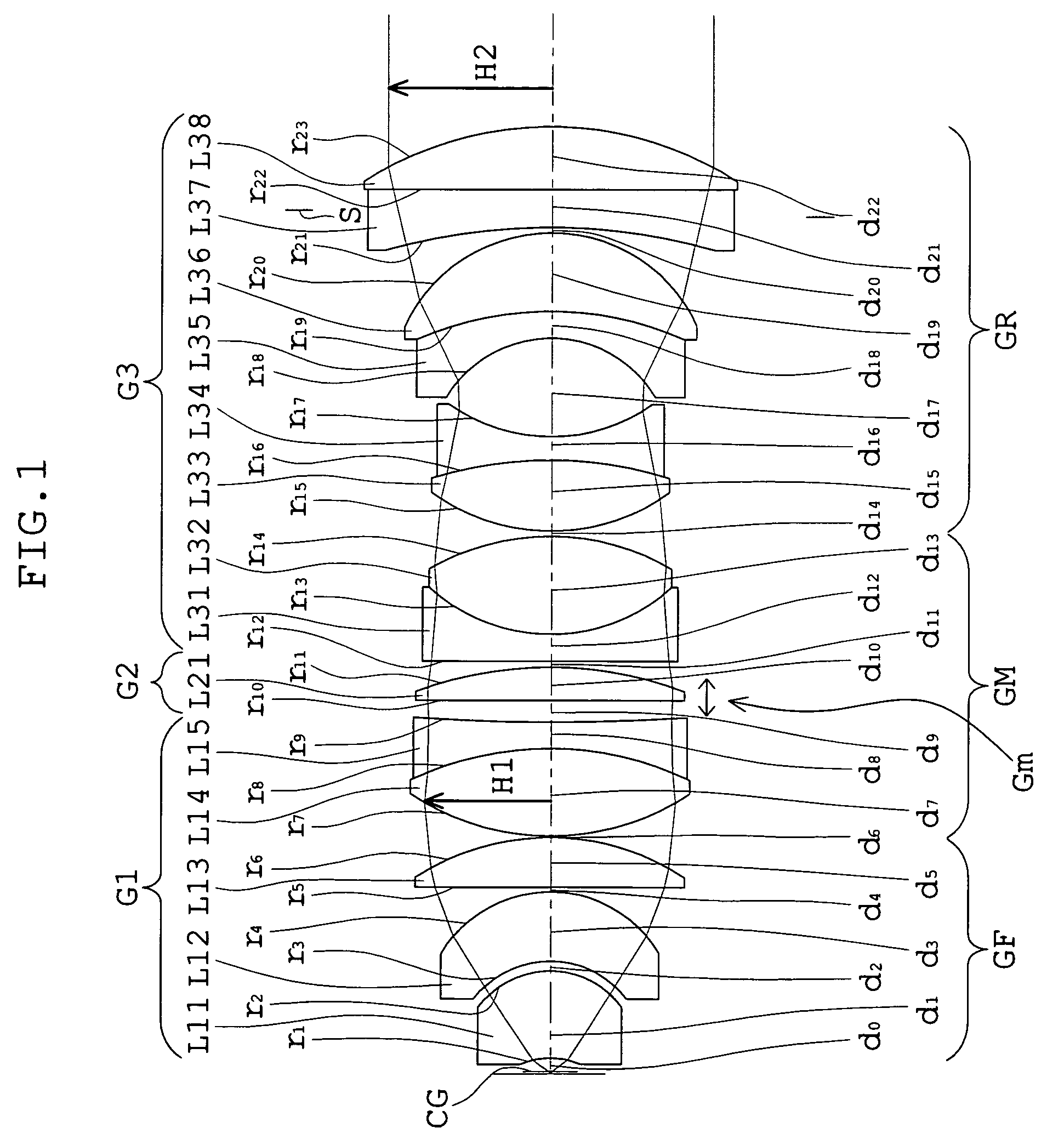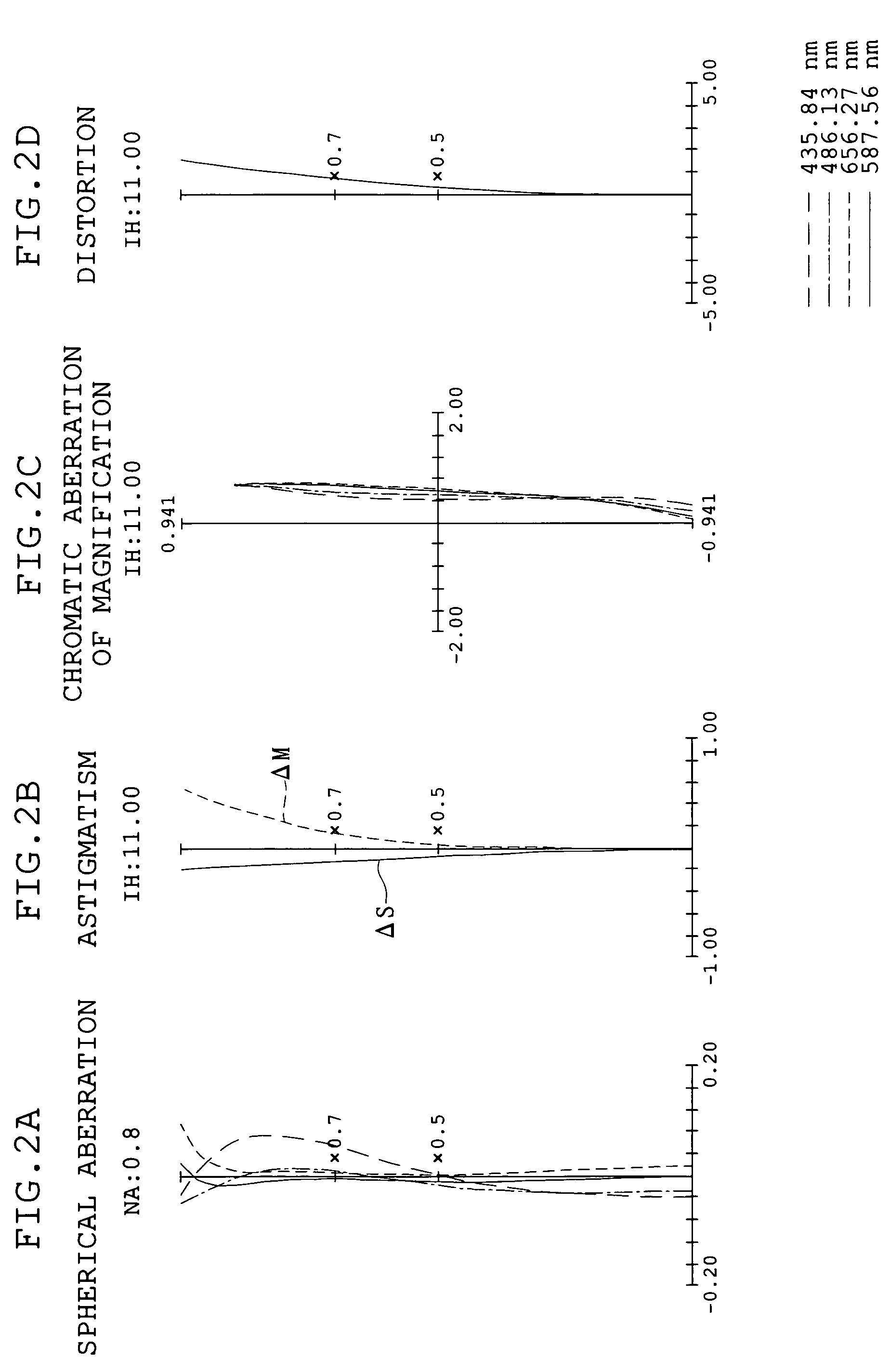Microscope objective
a technology of objective and microscopy, which is applied in the field of microscope objective, can solve the problems of affecting the active state of the cell by the stimulus itself, the cover glass is attended with a fabrication error, and the cover glass cannot be completely compensated by the objective, etc., and achieves wide field, large numerical aperture, and high extensiveness.
- Summary
- Abstract
- Description
- Claims
- Application Information
AI Technical Summary
Benefits of technology
Problems solved by technology
Method used
Image
Examples
embodiment 1
[0092]In accordance with the drawings, the embodiments of the present invention will be explained below.
[0093]FIG. 1 shows a schematic arrangement, developed along the optical axis, of Embodiment 1 of the microscope objective according to the present invention. FIGS. 2A, 2B, 2C, and 2D are graphs showing spherical aberration, astigmatism, chromatic aberration of magnification, and distortion, respectively, of the microscope objective in Embodiment 1, in a case where the distance between the objective and an imaging lens (tube lens unit) is 80 mm.
[0094]The microscope objective of Embodiment 1 includes, in order from the object side, a first lens unit G1, a second lens unit G2, and a third lens unit G3. Also, in FIG. 1, reference symbol CG represents a cover glass.
[0095]The first lens unit G1 includes, in order from the object side, a positive meniscus lens L11 with a concave surface facing the object side, a negative meniscus lens L12 with a concave surface facing the object side, a ...
embodiment 2
[0105]FIG. 3 shows a schematic arrangement of Embodiment 2 of the microscope objective according to the present invention. FIGS. 4A, 4B, 4C, and 4D are graphs showing spherical aberration, astigmatism, chromatic aberration of magnification, and distortion, respectively, of the microscope objective in Embodiment 2, in a case where the distance between the objective and an imaging lens (tube lens unit) is 80 mm.
[0106]The microscope objective of Embodiment 2 includes, in order from the object side, a first lens unit G1, a second lens unit G2, and a third lens unit G3. Also, in FIG. 3, reference symbol CG represents a cover glass.
[0107]The first lens unit G1 includes, in order from the object side, a positive meniscus lens L11 with a concave surface facing the object side, a positive meniscus lens L12′ with a concave surface facing the object side, a biconvex lens L13′(Gm2), and a cemented doublet of a biconvex lens L14 and a biconcave lens L15, and has positive refracting power as a wh...
PUM
 Login to View More
Login to View More Abstract
Description
Claims
Application Information
 Login to View More
Login to View More - R&D
- Intellectual Property
- Life Sciences
- Materials
- Tech Scout
- Unparalleled Data Quality
- Higher Quality Content
- 60% Fewer Hallucinations
Browse by: Latest US Patents, China's latest patents, Technical Efficacy Thesaurus, Application Domain, Technology Topic, Popular Technical Reports.
© 2025 PatSnap. All rights reserved.Legal|Privacy policy|Modern Slavery Act Transparency Statement|Sitemap|About US| Contact US: help@patsnap.com



